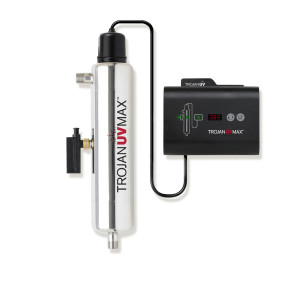Ultraviolet or “UV” purification systems use special lamps that emit UV light of a particular wavelength that have the ability, based on their length, to disrupt the DNA of micro-organisms. The process of exposing water to UV light is simple but effective, destroying 99.99 percent of harmful microorganisms without adding any chemicals to water. It is important to replace the UV bulb once per year for it to remain effective.
Benefits of UV Purification Systems
- More effective against viruses than chlorine
- Environmentally and user friendly, no dangerous chemicals to handle or store, no risks of overdosing
- Low initial capital cost as well as reduced operating expenses when compared with similar technologies such as ozone, chlorine, etc.
- Immediate treatment process, no need for holding tanks, long retention times, etc.
- Extremely economical, hundreds of gallons may be treated for each penny of operating cost
- No chemicals added to the water supply – no byproducts, (i.e. chlorine + organic compounds = trihalomethanes)
- No change in taste, odor, pH, conductivity, nor the general chemistry of the water
- Automatic operation without special attention or measurement, operator friendly
- Simplicity and ease of maintenance, periodic cleaning, (if applicable), and annual lamp replacement, no moving parts to wear out
- No handling of toxic chemicals, no need for specialized storage requirements
- Easy installation, only two water connections and a power connection
- Compatible with all other water purification processes, (i.e. reverse osmosis, filtration, water conditioning and softening)
